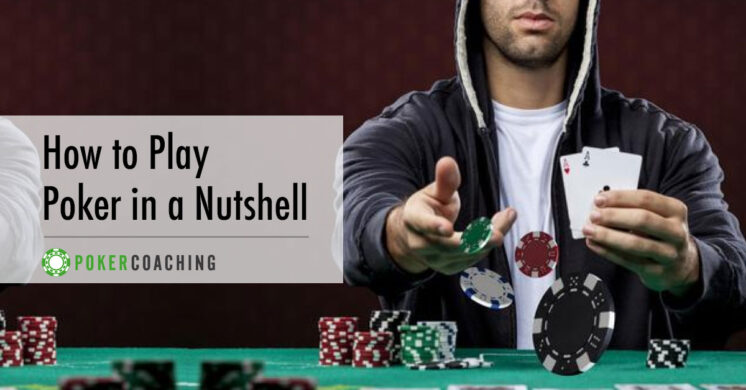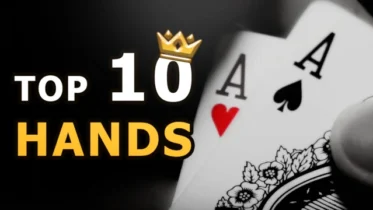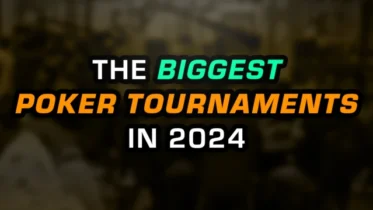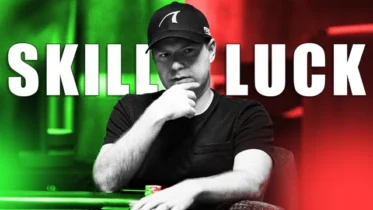“Alex, how do you play poker?” My friend asked me this with a smile while we were on a business call. On my podcast, we have an old joke. Whenever someone asks a question that is extremely broad, we call it a “how do you play poker?” question. It’s a fun way of saying, “how much time do you have? This might take a while.”
However, this time, my friend was serious: “I’m moving to the United States soon. I’ll keep helping you with your website stuff, Alex. But I want to play cards. How can I beat $1/$2 at my local casino? When I play tournaments up to $500 buy-ins, how can I win?” I was about to tease my friend about how generic this question was, then it got me thinking: I’m supposed to be a poker coach. I should be able to answer this. It’s a fun challenge.
Jump to:- Go in for the Kill
- Choose Your Hands Wisely
- Pay Attention to the Players at the Table
- Learn When to C-Bet
- Read Hands & Bluffs
So, I started mouthing off. Luckily, I was recording while I did this. This is the clean version of what I told him. “Look, man, the biggest problem everybody has when they play cards for money is they are too tentative. They never go for the throat. Have you ever watched a chess hustler in Central Park? How do they beat bums? Aggression. They control the center of the board quickly. The tourist is looking for the kill shot. Sometimes it comes. Most of the time it doesn’t. That’s why the hustler is still sitting there.”
Go in for the Kill
“You want to make money at cards? You attack. You don’t wait for the kill shot. When you bet so many good things can happen. You can get a better hand to fold. You can make a worse hand pay you. You can slow a guy down. Many times, a guy checks to you on the flop, you bet small, and he calls…you just bought a river. He will check to you on the turn close to 100% of the time. You can check back. You can do this on the turn too. You bet small, they call…you can check the river. You just bought the showdown.”
“The problem low-to-mid stakes players have, man, is that they don’t raise postflop as a bluff. It’s the hardest thing in the world to teach a poker player. No one wants to raise as a bluff because at low-to-medium stakes…people don’t like to fold. They get caught bluffing a few times. They feel stupid. Everyone eyes them like, ‘oh look at you trying.’ They never do it again. When I was researching live poker for my book, I had a hard time finding low-to-mid stakes players who would raise as a bluff.”
“This creates a real opportunity for you. Because you dictate the action if you’re aggressive. If you like your hand the guy has to play a big pot. If you don’t like it, the pot becomes much smaller. This effect becomes really pronounced in position.”
Take On 3 Bet Opportunities
“If you come into a pot, you’re raising. Cold calling is death in low-to-mid stakes. The average guy is opening too much and not defending well to 3 bets. 3 bet him! At higher stakes, people will punish you for getting out of line. At this limit, they’ll just whine.”
“Repop the guy, get him heads-up, and fire. If they raise, they have it. If they call, take your free cards.”
“That’s the whole game man. Heads-up pots. Heads-up pots with guys who play too many hands. Multiway pots are death. You know why? YOU NEED A HAND TO WIN MULTIWAY. If you cold call someone’s open, you will play multiway at these stakes. The button will flat. The big blind will flat. But if you 3 bet? No one’s got a cold 4 bet bluff. You gotta play higher to see that one.”
“So you’re cornering these guys who play too many hands. If you open raise, raise big, and get the big blind to call you. If someone opens from lojack or later and you have anything playable you 3 bet him. Chances are he has too many hands. If you see him open suited-gappers or unsuited broadways from an earlier position, you 3 bet him when he opens there too.”
Choose Your Hands Wisely
“You need something playable. A suited gapper. Broadways. Small pairs. Something. But you don’t need much, because they’re pretty predictable postflop. If they have high cards, they’re folding. Especially out of position. That’s why 3 betting is such a big deal.”
“If they open 20-25% of the hands and they flat every 3 bet, then they have high cards 45% of the time or more on any board that doesn’t have two cards nine or higher. You can just bet 3/4ths pot if you think that will fold high cards. That bet only needs to work 42.8% of the time.”
“Just bet something bigger than half-pot. People call with high cards versus normal bet sizes. If you bet big though, a lot of guys will fold.”
“If the board comes ace high though just bet small. They either have the ace or they don’t.”
Pay Attention to the Players at the Table
“Now, getting back to the main point. You get it heads-up with a guy who has too many hands. Pretty much anybody opening these days has too many hands. The big blind flatter has too many hands. A nit cold calls you…leave him alone. Check/fold. It makes you look nittier. Don’t 3 bet that guy either.”
“But you get heads-up with a guy who has too many hands, you bet, you get him to fold all the times he missed…that’s a profitable bet right there. You keep banking those, you WILL MAKE MONEY at No-Limit Hold’em.”
Learn When to C-Bet
“The biggest problem most people have is four of their c-bets don’t work over two hours and they go psychotic. They try to triple barrel someone off of a hand later, and bam, they’re negative big time for the session.”
“When you continuation bet and they call, you have to trust they have a pair 70% of the time or more because generally, that’s what they’ll have. Nothing is 100% in No-Limit Hold’em. You’re working with generalities. You just want to be right the majority of the time.”
“You should only bet that turn if it’s terrible for a pair. Say 7-5-4 is the board, turn is a six. That’s a card that’s likely to make a pair fold. But if the flop is 7-5-4 and the turn is an ace…that doesn’t mean the guy is going to fold a seven or five, even if the ace is in your range. Many low-to-mid stakes players hold on there. You want a four flush board or four straight board, or just something atrocious. You don’t want to double barrel bluff much though. Not while you’re learning. You’ll have to develop that play as you move up in stakes though.”
“Where you make your money in low-to-mid stakes is with your superior pairs. You have top pair mediocre kicker…you go three streets with it. That river bet? 5 or 10 big blinds? There’s your hourly right there. Bank that and the game is won.”
Read Hands & Bluffs
“Remember, too, they don’t like raising without two pair or better. They like to fold high cards, call with pairs, and raise two pair or better. Especially deep stacked. People don’t like raising draws there.”
“Let’s say you have a weak top pair. You don’t want to bet flop, bet turn, check river. Then you’re telling the guy you have a weak pair.”
“Bet something small on the flop. The guy isn’t going to raise it as a bluff nine times out of ten. He’ll call with some extra high cards, that’s it. Then you can bet 35% on turn. 50% river. Small bets but you got three streets – it adds up to a lot.”
“If you can sucker people into that river…they call too much. Everybody wants to see what you have on the river. Curiosity equity is a hell of a thing. And no one understands how bad it is for them to call on the river. River bets are 5 big blinds. 10 big blinds. 20 big blinds. And people just hand them to you! They sometimes hold their cards over the muck, knowing their hand is bad! Kings are worth like four big blinds average on a good day, AND THEY’RE JUST GOING TO HAND YOU 20 BIG BLINDS?”
“And once you understand why you always have to be value betting rivers, you will understand No-Limit Hold’em. You will have a game for life. You will be able to make money anywhere this game is spread. You can live off the grid as long as you want. That, my friend, is a beautiful thing.”



